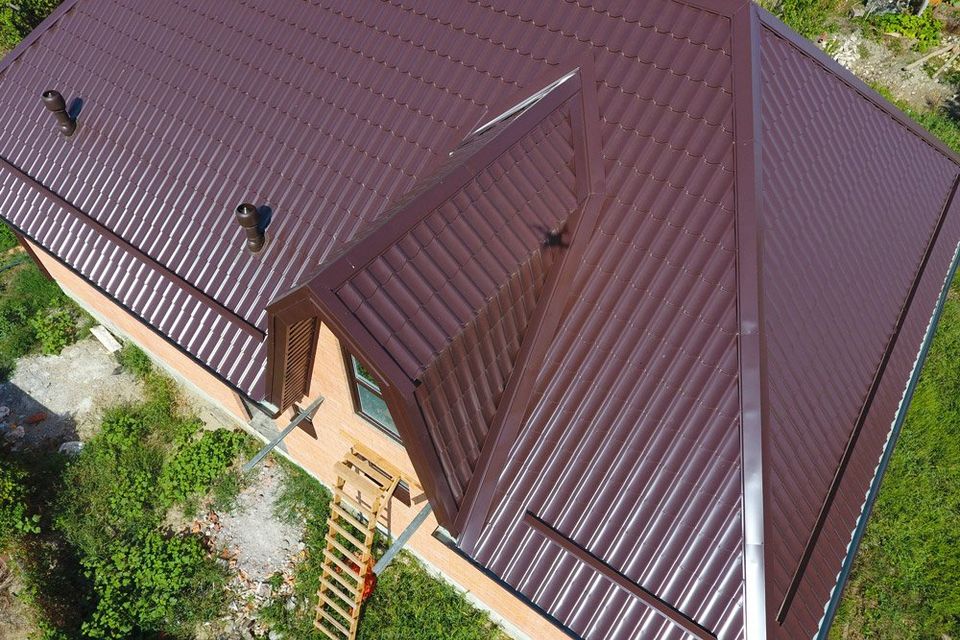Choosing the right roofing material is crucial for achieving the perfect balance of durability, aesthetic appeal, and cost-efficiency. With various options available, each material offers unique advantages suited to different climates, architectural styles, and budgets. This guide explores some of the most popular roofing materials, comparing their pros, cons, and ideal applications to help you make an informed decision.
1. Asphalt Shingles
Asphalt shingles are one of the most commonly used roofing materials in North America. Their affordability and ease of installation make them a popular choice among homeowners. They come in various colors and styles, offering flexibility for homeowners seeking a customizable yet budget-friendly roofing option.
- Pros: Asphalt shingles are lightweight, cost-effective, and available in a wide range of colors, making them versatile for various home styles. They’re also relatively easy to install, which can reduce labor costs.
- Cons: Asphalt shingles have a shorter lifespan than other materials, generally lasting between 15-30 years. They are also prone to wind damage and may deteriorate quickly in extreme climates.
- Ideal For: Asphalt shingles are ideal for residential properties, especially those looking for an affordable and easy-to-maintain option.
2. Metal Roofing
Metal roofing is known for its durability and energy efficiency, making it an excellent choice for homeowners looking for a long-lasting roof. Metal roofs can last 50 years or more, and they are available in various metals, including aluminum, steel, and copper.
- Pros: Metal roofs are highly durable, fire-resistant, and reflect heat, which can reduce cooling costs during hot seasons. They are also recyclable, making them environmentally friendly.
- Cons: Metal roofing comes with a higher initial cost than some other materials. It can also be noisy during heavy rain, although insulation can help reduce the noise.
- Ideal For: Metal roofing is ideal for both residential and commercial properties, especially in areas prone to wildfires or extreme weather.
3. Tile Roofing
Tile roofing offers a distinct look that is both elegant and durable. Commonly made from clay or concrete, tile roofs can last 50-100 years and are often seen on Mediterranean, Spanish, and Southwestern-style homes.
- Pros: Tile roofs are extremely durable and offer excellent insulation, helping to regulate indoor temperatures. They are resistant to fire and rot, making them suitable for long-term use.
- Cons: Tile roofing is one of the heaviest materials, requiring reinforced roof structures. It is also expensive, both in material and labor costs, and may not be suitable for all climates.
- Ideal For: Tile roofing is ideal for warmer climates, as it is less likely to freeze. It works well for homes seeking a timeless, Mediterranean look.
4. Slate Roofing
Slate is a natural stone material that provides an upscale, timeless look. Known for its exceptional longevity, slate roofing can last 75-100 years, making it a true investment for homeowners.
- Pros: Slate roofs are incredibly durable and offer an elegant appearance that is hard to match. They are resistant to fire, mold, and insects, adding to their durability.
- Cons: Slate roofing is very heavy, requiring reinforced structural support. It is also one of the most expensive roofing materials, both in terms of material and installation costs.
- Ideal For: Slate roofing is ideal for historic homes, luxury properties, and regions where homeowners are looking to make a long-term investment in their roofing.
5. Wood Shakes and Shingles
Wood shakes and shingles provide a natural, rustic look that complements certain architectural styles. Made from cedar, redwood, or pine, wood roofing offers a unique aesthetic but requires more maintenance than other materials.
- Pros: Wood roofing is eco-friendly and offers excellent insulation properties. It provides a natural, rustic look that enhances the appearance of certain homes.
- Cons: Wood roofing is susceptible to fire, insects, and mold, which means it requires regular maintenance. Some areas with fire codes may not allow wood roofing.
- Ideal For: Wood shakes and shingles are ideal for eco-conscious homeowners and those with rustic or cabin-style homes.
6. Flat Roofing (TPO, EPDM, PVC)
Flat roofing is commonly used on commercial properties but is becoming more popular for modern residential homes with flat or low-slope designs. TPO, EPDM, and PVC are the main types of flat roofing materials.
- Pros: Flat roofing materials like TPO and PVC are energy-efficient, lightweight, and relatively affordable. They also allow for additional rooftop installations, like solar panels or HVAC units.
- Cons: Flat roofing may require regular maintenance to prevent leaks and water pooling. Some materials can also be punctured easily.
- Ideal For: Flat roofing is ideal for commercial properties and modern homes with flat or low-slope roof designs.
Choosing the Right Roofing Material for Your Needs
When choosing a roofing material, it’s essential to consider factors such as budget, climate, and aesthetic preferences. For example, if you live in a region with frequent storms, metal roofing might be ideal due to its durability and resistance to severe weather. On the other hand, if energy efficiency is a priority, TPO or PVC roofing can provide excellent insulation and reduce cooling costs.
A professional roofing company, like Coons Roofing, can help homeowners assess which material best meets their specific requirements and aligns with their budget and home’s architecture.
Additional Considerations When Selecting Roofing Materials
Beyond the basic characteristics, there are other considerations to keep in mind when choosing roofing materials:
- Local Building Codes: Some regions have restrictions on certain materials, such as wood, due to fire codes. Be sure to check local regulations before deciding.
- Maintenance Requirements: Some roofing materials, like wood shakes, require more frequent upkeep than others. Consider your willingness and ability to maintain the roof over time.
- Environmental Impact: If sustainability is important to you, consider materials like metal, which is recyclable, or TPO, which offers energy-efficient properties.
Choosing the right roofing material is a big decision that affects your home’s curb appeal, energy efficiency, and protection from the elements. Consulting with professional Houston roofers can help guide you through the options to find the best match for your home’s needs.
Conclusion
Whether you’re considering the affordability of asphalt shingles, the durability of metal, or the timeless appeal of slate, each roofing material offers distinct benefits that cater to various needs. With the right information and support from a reliable roofing company like Coons Roofing, homeowners can make informed choices to ensure their roof’s longevity, performance, and aesthetic appeal. Making the right decision now can result in years of protection, value, and beauty for your home.






